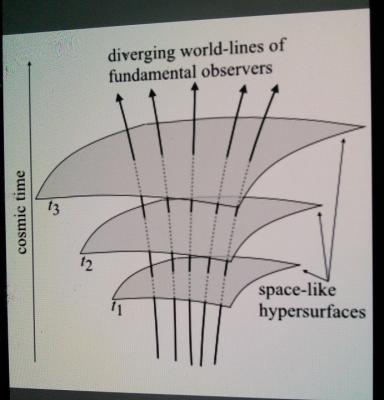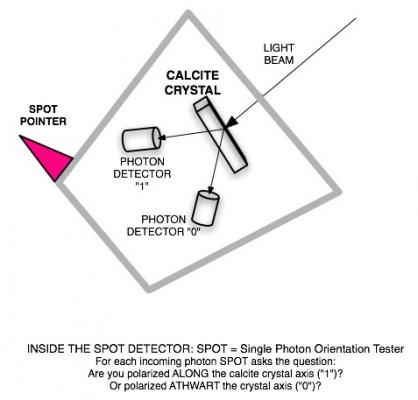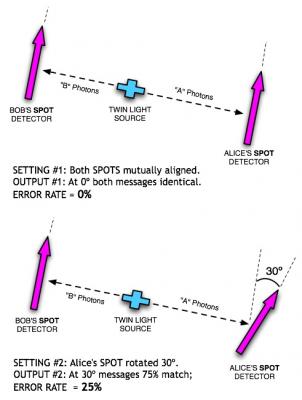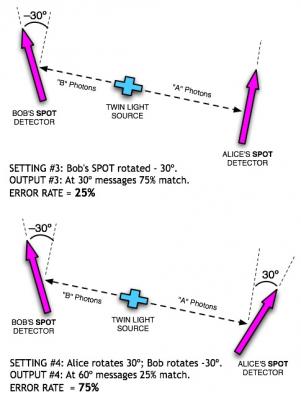

david345
Senior Members-
Posts
149 -
Joined
-
Last visited
Content Type
Profiles
Forums
Events
Everything posted by david345
-
You claim my post had no "definition of point" Please elaborate.
-

Calling a statement "trash" is not a disproof.
david345 replied to david345's topic in General Philosophy
hypervalent_iodine, Maybe he will ask when he becomes available. This is a difficult subject These are the type of statements you make when you believe in free will. Studiot, I have a long history of gov scientist's in my family. I am the failure who makes 100k per yr. I know stuff that even they do not know. -
Imatfaal (selfadmitted) layer. If you want to debate then I am here.
-
"And, you still fail to grasp the point. If you don't like people being an ass to you, then people probably don't like you being an ass to them." Nice people are easy to come by. Smart people are hard to come by. Sometimes they speak in a language you find hard to accept. Maybe you will learn something from their unfairly harsh statement's. Yodaps used revenge to deal with xyzt. Revenge is based off the assumption that humans have free will. Yodaps, if you want revenge then deal with me. I will be anxiously awaiting.
-

Is there a common moment of now throughout the Universe?
david345 replied to 1x0's topic in Relativity
In the RW metric there is a global time (cosmic time) that is the same for all fundamental observers. The fundamental observers can synchronize their clocks to a predetermined time when the universe reaches a certain density. The big bang singularity is often used as the start of cosmic time. If two fundamental observers are using different units of time then they can use time since the big bang to convert one unit to another. Time since the big bang will be the same for all fundamental observers in the universe. It is believed that FLRW closely approximates our universe. There are questions about how well it handles the "lumpiness" of our universe. -

Is there a common moment of now throughout the Universe?
david345 replied to 1x0's topic in Relativity
T3 can be observed at a later time. We just can not observe t3 at t3. You previously said: "Well, what I say is that we cannot get info from those surfaces, they are not observable. What is observable is what lies on the surface of our past light cone. All the rest is extrapolation." Your picture clearly shows A getting info from t1. Your picture clearly demonstrates that the slices are observable. -

Is there a common moment of now throughout the Universe?
david345 replied to 1x0's topic in Relativity
Yes that is what you stated. You claim it isn't what you stated. I can also make a statement and it's negation: "I said A" "I did not say A" You said: "No no, I claim exactly the contrary. The slice is unphysical because exactly as you wrote: nothing can have an instaneous effect. Nothing can go faster than light." Was your comment faster then light or was your comment "above the slice"? -

Is there a common moment of now throughout the Universe?
david345 replied to 1x0's topic in Relativity
What causes the past light cone? A past slice. Why am I even responding? Your comment came from a past slice. Obviously I did not receive you're comment instantaneously. Your comment must be unphysical (according to you). -

Is there a common moment of now throughout the Universe?
david345 replied to 1x0's topic in Relativity
You're argument is nothing more then the statement " A human error can occur." Please provide something better. So you are claiming everything is unphysical because nothing can go faster then light. -

Is there a common moment of now throughout the Universe?
david345 replied to 1x0's topic in Relativity
In response to your modified post. You seem to claim that something is only real if it can have an instantaneous (faster then light) effect on something else. Some of us have have our own definitions of reality... -

Is there a common moment of now throughout the Universe?
david345 replied to 1x0's topic in Relativity
They are not instantaneously observable. It takes time for the light to reach us. -

Is there a common moment of now throughout the Universe?
david345 replied to 1x0's topic in Relativity
Yes as far as I can tell. -

Is there a common moment of now throughout the Universe?
david345 replied to 1x0's topic in Relativity
I see that the shwarzchild metric uses the gravitational constant and the frw does not. I just finished my first book on gr. You are a few books ahead of me. You say frw is time dependent. It appears that density of mass, radiation, dark energy and the Hubble constant can be used to come up with a global cosmic time which all fundamental observers could determine based off the density. -

Is there a common moment of now throughout the Universe?
david345 replied to 1x0's topic in Relativity
The cosmological principle states that on a sufficiently large scale the universe is homogeneous and isotropic. Homogeneous means the number of stars per unit volume is roughly the same. Isotropic means uniform in all directions. In a sphere with a radius of 100 Mpc the average density is the same as any other sphere the same size. 1 pc=3.26 light-years. Cosmological time is the proper time measured by those who are at rest with respect to the local matter distribution. Their only motion is that which results from the expansion of the spacetime. These are known as fundamental observers. Cosmological time is useful globally rather then locally. Fundamental observers can agree to synchronize their clocks to a standard time when the universal homogeneous density reaches a certain value such as the big bang singularity. The age of the universe can be approximated using the velocity distance law. The velocity distance law is v=H(t)d. v is the proper radial velocity. v equates the rate of change of proper distance with respect to cosmic time. d is the proper distance. H(t) is the Hubble parameter. This states that in RW spacetime fundamental observers are moving away from each other with a proper radial velocity that is proportional to the proper distance between them. t0=d/v=1/H0 t0=13.9 billion years. t0 is time since the big bang. H0 is the Hubble constant. A more accurate approximation involves the density of radiation, matter, and dark energy along with the Hubble constant. -

Is there a common moment of now throughout the Universe?
david345 replied to 1x0's topic in Relativity
The t coordinate in the Robertson-Walker metric represents cosmic time. This is the time measured by a fundamental observer. A fundamental observer is one whose only motion is a result of the expansion or contraction of homogenous, isotropic spacetime. At any particular value of cosmic time, all fundamental observers will be measuring the same slice of three dimensional space. http://en.m.wikipedia.org/wiki/Cosmic_time -
The correct answer probably involves general relativity but I will give a simple answer using special relativity. In 2d space the distance between two points is s^2=x^2+y^2. This is just Pythagorean theorem.In 3d it is s^2= x^2 +y^2+z^2. In spacetime it is s^2=t^2-(x^2). It should be noted that -3^2=9 and -(3^2)=-9. S is called the spacetime interval. The spacetime interval is invariant. Invariant=same for all observers. Relative=different for observers moving at different speeds. To simplify the equation I set c =1 (one unit of time equals 1 year and one unit of distance equals 1 light-year) and only consider movement in the x direction. We will now compare the two equations. S^2=x^2+y^2 S^2=t^2-(x^2) The twin who travels to space and returns will be called spaceman the twin who remains on earth will be called earthman. We will use the reference frame of earthman. Earthman see's his twin leave earth at half the speed of light and it takes 5 years to get to his destination. It takes another 5 years for him to return at half the speed of light. We will now calculate the spacetime interval for space man. (Note: time will be earthman time and distance will be earthman distance) Away trip: S^2=5^2-(2.5^2) S=4.33 Return trip: S^2=5^2-(2.5^2) S=4.33 Spacetime interval for total trip: 4.33+4.33=8.66 We will now calculate the spacetime interval for earthman. S^2=10^2-(0^2) s=10 Spacetime interval for spaceman=8.66 Spacetime interval for earthman=10 Spaceman: spacetime interval(invariant)=proper time(invariant)=8.66 Earthman: coordinate time(relative)=spacetime interval(invariant)=proper time(invariant)=10 If you use the time dilation equation for spaceman you will find that it gives the same 8.66 result as the spacetime interval.
-
"The relativistic mass is always equal to the total energy (rest energy plus kinetic energy) divided by c2.[3] Because the relativistic mass is exactly proportional to the energy, relativistic mass and relativistic energy are nearly synonyms; the only difference between them is the units. If length and time are measured in natural units, the speed of light is equal to 1, and even this difference disappears. Then mass and energy have the same units and are always equal, so it is redundant to speak about relativistic mass, because it is just another name for the energy. This is why physicists usually reserve the useful short word "mass" to mean rest mass, or invariant mass, and not relativistic mass."http://en.m.wikipedia.org/wiki/Mass%E2%80%93energy_equivalence "According to Einstein's famous equation E = mc2, the energy (E) of a body is numerically equal to the product of its mass (m) and the speed of light © squared. It is customary to refer to this result as "the equivalence of mass and energy," or simply "mass-energy equivalence," because one can choose units in which c = 1, and hence E = m. An important consequence of E = mc2 is that a change in the rest-energy of a body is accompanied by a corresponding change to its inertial mass. (This is discussed further in Section 1.) This has led many philosophers to argue that mass-energy equivalence has profound consequences for ontology, the philosophical study of what there is. There are two main philosophical interpretations of E = mc2. The first is that mass-energy equivalence teaches us that "mass" and "energy" designate the same property of physical systems. This is the weaker of the two interpretations because no further ontological claims are made. The second interpretation is that E = mc2 entails that there is only one sort of fundamental stuff in the world." http://stanford.library.usyd.edu.au/archives/spr2004/entries/equivME/ e(relativistic)=m(relativistic)c^2 e(invariant)=m(invariant) c^2 e(relativistic)^2=(PC)^2+(m(invariant) c^2)^2 The third equation is the energy-momentum relation. It is the only equation where e is not exactly proportional to m. The equation relates relativistic energy to momentum and invariant mass. (mod note: feel free to split this into a separate subject)
-
The c in mc^2 is a constant. The v in 1\2m*v^2 is a variable. C can be set to 1 and mc^2 becomes m. You can't do the same with v because it is a variable. Einstein's equation for energy has one variable on the right m. The old equation has two variables on the right m and v. Pounds=kilograms*2.2. Pounds and kilograms are both weight. If the constant is set to 1 then you get pounds=pounds.
-
This can be explained with photons going through two polarizers. Polarizer 1 can give the photons a definite polarization. All that pass through polarizer 1 will have the same polarization. In this example we will say they are all vertically polarized. If there is a 30 degree angle between polarizer 1 and 2 then 75% of the photons will pass through polarizer 2. 75% is not a definite yes or no. If 4 photons pass through polarizer 1 then 3 will pass through polarizer 2 and one will be blocked. All four had the same polarization when they passed through the first polarizer. The angle between the two polarizers was the same for all four photons. Why did three pass through while one was blocked? The law used to determine the probability is Malus law. It was originally written to determine the intensity of the light waves. Quantum mechanics now uses the intensity of light waves to determine the probability of detecting the photon. The only two possibilities where the results are definite are when both polarizers are vertically polarized and when one is vertically polarized and the other is horizontally polarized. In the first case the probability of pass through is 100% in the second case the probability is 0%. In all other cases it is uncertain whether the photon will pass through the second polarizer.
-

New simulation shows Einstein was correct about hidden variables
david345 replied to Theoretical's topic in Speculations
It is obvious you used the video because it is not a clear example. Once again I will demonstrate clearly why you are wrong. The detector gives a 0 or 1 We will assume 4 "unentangled" photons with matching polarizations are sent out in both directions. Their polarization will be determined when they leave the source. The detectors will read a 0 or 1 depending on the axis of polarization. We will set the polarizations to 1010 for the 4 photons. step 1: Bob and Alice set their detectors at matching angles. They both get 1010. step 2: The same 1010 signal is sent out. Alice rotates detector 30 degrees. The cos(angle)^2 equation says she should get a 25% error rate. Bob gets 1010 Alice gets 1110. A 25% mismatch. step 3: The same 1010 signal is sent out. Alice returns detector to original position and now Bob rotates his detector -30%. The cos(angle)^2 equation says Bob should get a 25% error rate. Bob gets 1000 and Alice gets 1010. A 25% mismatch. Step 4: The same 1010 signal is sent out. Alice rotates her detector 30 degrees. Bob rotates his detector -30 degrees. Alice should get 1110 the same result as step 2. The exact same signal was sent out. Her detector was in the exact same 30 degree position. She should get the exact same result. Bob should also get the exact same 1000 result as step 3. It was the exact same 1010 signal sent out and his detector is in the exact same -30 degree position. Let us compare results. Alice 1110 Bob 1000. This is a 50% mismatch. This is what happens when the polarizations are known when they leave the detector. The cos(angle)^2 equation says there should be a 75% mismatch. The only way you can get this 75% mismatch is if the polarizations are not determined until they are measured and the angle of Bob's detector affected Alice's results and the angle of Alice's detector affected Bob's result. A 75% mismatch can only be explained by spooky action at a distance. Nick Herbert developed this proof and he received a Ph.D. in physics from Stanford University. Good night. -

New simulation shows Einstein was correct about hidden variables
david345 replied to Theoretical's topic in Speculations
This equation is only correct because the light does not have a definite polarization until it is measured. This is why you continue to calculate probabilities instead of give an example where you track the polarization from the start until the finish. It is because you can't. All you can do is calculate probabilities using the very equation that proves you wrong. -

New simulation shows Einstein was correct about hidden variables
david345 replied to Theoretical's topic in Speculations
There is 9 possible configurations of the two detectors a=0 b=120 c=240. . ABC A sds B dsd C sds S is where they match d is where they are different. there are 5 s and 4 d. S happens 5 of the 9 possibilities. I don't see why this is so hard to see.This is why you can not use the cos(angle)^2 equation when they have a definite polarization when they leave the detector. This is basic physics. -

New simulation shows Einstein was correct about hidden variables
david345 replied to Theoretical's topic in Speculations
There is 3 possibilities. It goes through O, 120, or 240 If there is three equal possibilities then each should have a 33% chance of happening. Your cos(angle)^2 equation gives a 25% chance. This is why it has no business being in your simulation. Three equal possibilities each having a 25% chance of happening? This is what you are doing by adding this to your code. -

New simulation shows Einstein was correct about hidden variables
david345 replied to Theoretical's topic in Speculations
Then maybe you should stop acting like one. 13 pages and you have been proven wrong time and time again. 13 pages and not one person has agreed with you. 13 pages and you have failed to produce one single demonstration of your code. You have produced nothing but excuses and lies. -

New simulation shows Einstein was correct about hidden variables
david345 replied to Theoretical's topic in Speculations
If the polarization is 35 then you say 35. Did that use cos(angle)^2? No. You have been caught cheating and refuse to admit it. If it is 35 when it leaves the source then it should be 35 when it gets to the detector. That last sentence is simple and clear. Where is the cos equation in that process. 13 pages and not one person has agreed with you.




